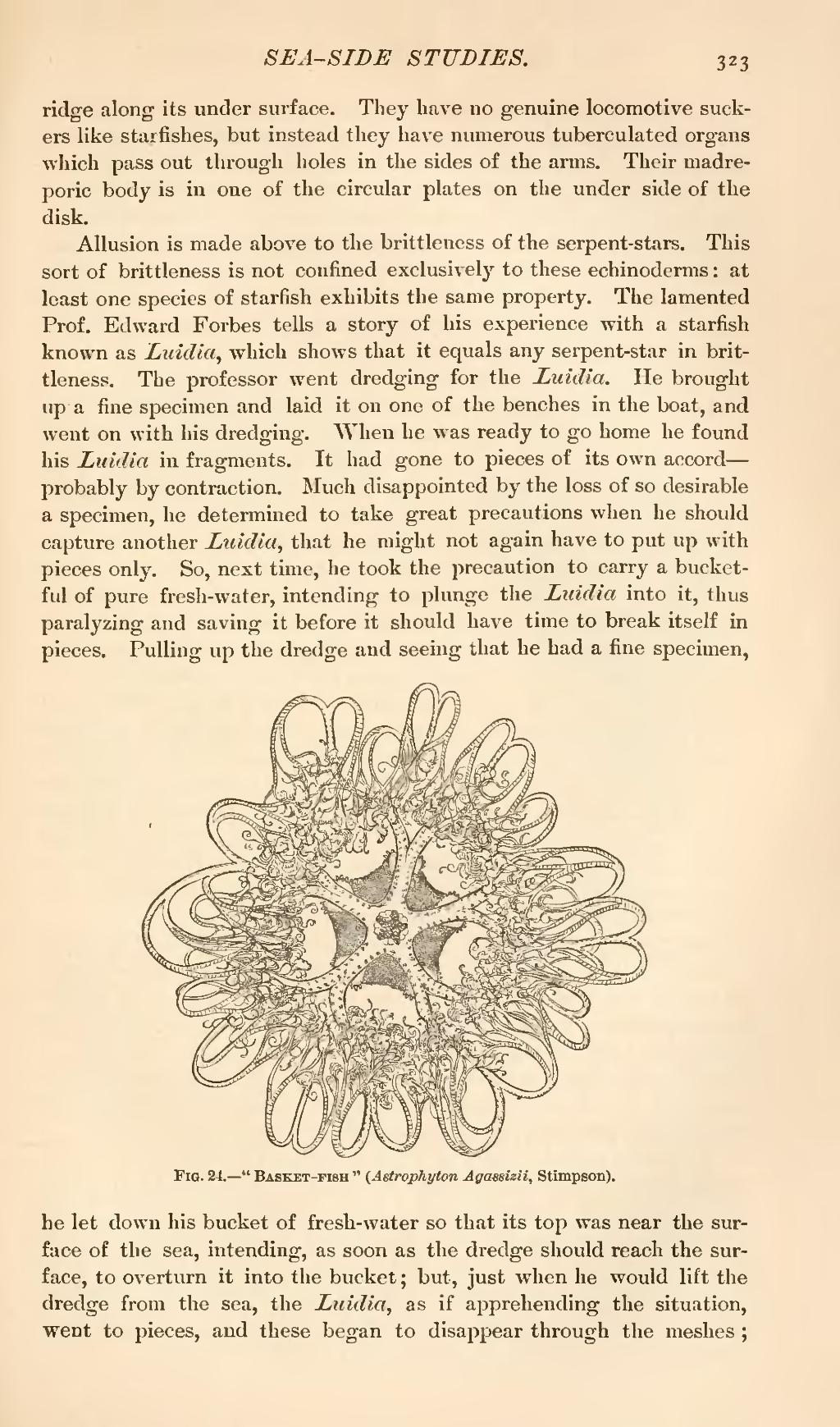ridge along its under surface. They have no genuine locomotive suckers like starfishes, but instead they have numerous tuberculated organs which pass out through holes in the sides of the arms. Their madreporic body is in one of the circular plates on the under side of the disk.
Allusion is made above to the brittleness of the serpent-stars. This sort of brittleness is not confined exclusively to these echinoderms: at least one species of starfish exhibits the same property. The lamented Prof. Edward Forbes tells a story of his experience with a starfish known as Luidia, which shows that it equals any serpent-star in brittleness. The professor went dredging for the Luidia. He brought up a fine specimen and laid it on one of the benches in the boat, and went on with his dredging. When he was ready to go home he found his Luidia in fragments. It had gone to pieces of its own accord—probably by contraction. Much disappointed by the loss of so desirable a specimen, he determined to take great precautions when he should capture another Luidia, that he might not again have to put up with pieces only. So, next time, he took the precaution to carry a bucketful of pure fresh-water, intending to plunge the Luidia into it, thus paralyzing and saving it before it should have time to break itself in pieces. Pulling up the dredge and seeing that he had a fine specimen,

Fig. 24.—"Basket-fish" (Astrophyton Agasaizii, Stimpson).
he let down his bucket of fresh-water so that its top was near the surface of the sea, intending, as soon as the dredge should reach the surface, to overturn it into the bucket; but, just when he would lift the dredge from the sea, the Luidia, as if apprehending the situation, went to pieces, and these began to disappear through the meshes;

